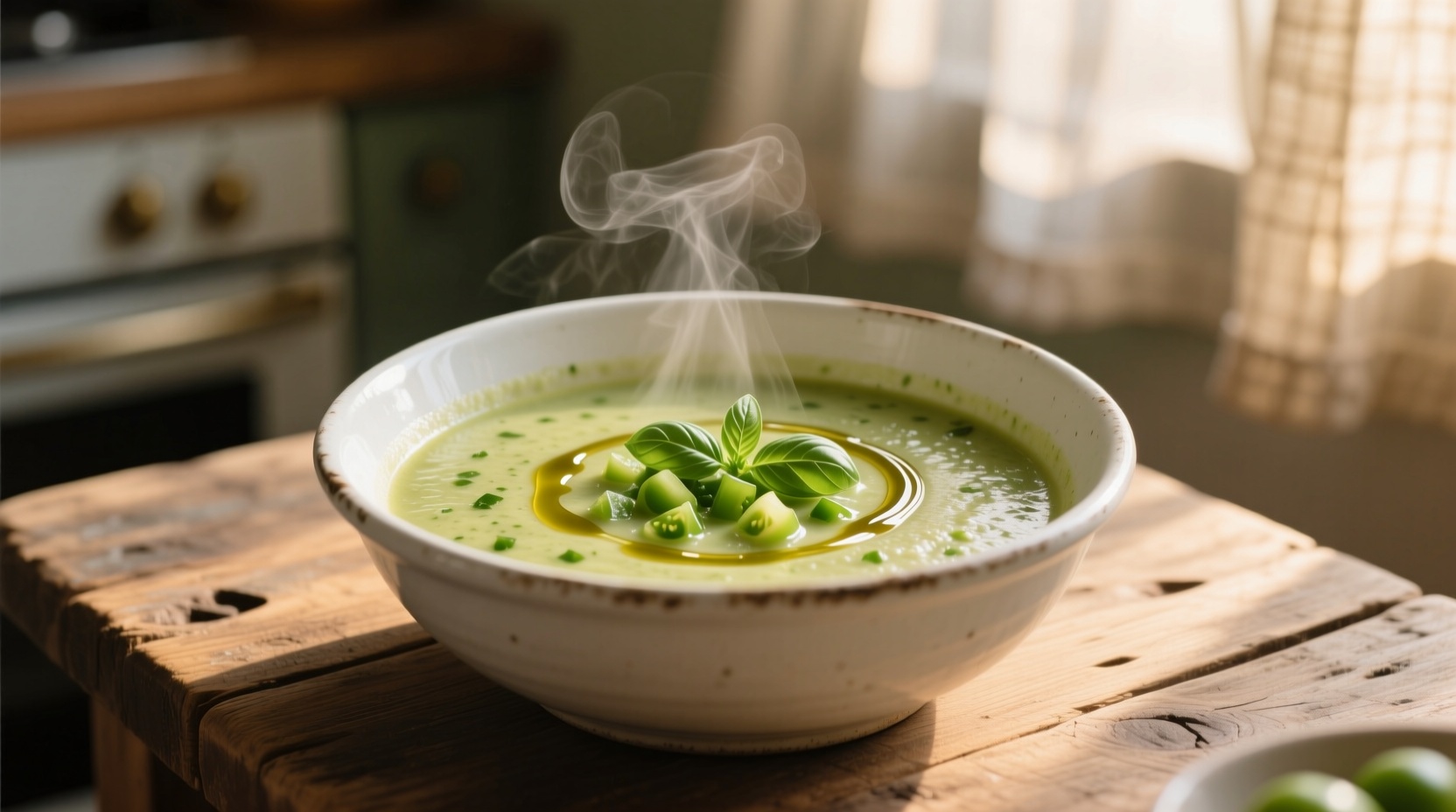Every late summer and early fall, home gardeners face the same dilemma: what to do with the abundance of unripe tomatoes still on the vine as cold weather approaches. Green tomato soup provides the perfect answer, turning potential waste into a delicious, nutrient-rich meal that showcases the distinctive tartness of unripe tomatoes.
Why Green Tomatoes Make Exceptional Soup
Unlike their red counterparts, green tomatoes contain higher levels of natural pectin and organic acids, creating a naturally thickened soup with vibrant flavor. When cooked properly, green tomatoes lose their raw bitterness while maintaining a refreshing acidity that makes this soup particularly versatile.
| Characteristic | Green Tomato Soup | Ripe Tomato Soup |
|---|---|---|
| Flavor Profile | Bright, tangy, complex acidity | Sweet, mellow, umami-rich |
| Texture | Naturally thicker due to pectin | Requires thickening agents |
| Best Season | Late summer to early fall | Peak summer |
| Preparation Time | 45-60 minutes | 30-45 minutes |
The Historical Journey of Green Tomato Soup
Green tomato soup has roots in resourceful cooking traditions dating back to the Great Depression, when nothing went to waste. Historical records from USDA agricultural extensions in the 1930s document recipes specifically designed for "saving the green crop" before frost. This practical approach evolved into a celebrated culinary tradition, particularly in regions with short growing seasons.
Perfect Timing for Harvesting Green Tomatoes
For optimal soup results, harvest tomatoes when they're fully formed but still firm and green. The best candidates show a slight color change from deep green to a lighter shade, indicating they've reached "mature green" stage. Avoid using tomatoes with white shoulders or those that feel soft, as these won't provide the proper texture and flavor balance.
Essential Ingredients for Authentic Flavor
The magic of green tomato soup comes from balancing the natural tartness with complementary flavors:
- Green tomatoes (3-4 pounds) - preferably "mature green" stage
- Aromatic base - onions, celery, and garlic
- Acid component - apple cider vinegar or lemon juice
- Sweet counterpoint - 1-2 peeled tart apples or a touch of sugar
- Herb bouquet - fresh thyme, basil, or tarragon
- Cream element (optional) - heavy cream or coconut milk
Step-by-Step Preparation Guide
Follow these professional techniques for perfect green tomato soup every time:
- Wash and roughly chop tomatoes (no need to peel)
- Sauté onions and celery in olive oil until translucent
- Add garlic and cook for 1 minute until fragrant
- Stir in tomatoes, apples, herbs, and broth
- Simmer covered for 30-40 minutes until tomatoes are completely tender
- Blend until smooth using an immersion blender
- Adjust seasoning with salt, pepper, and a splash of vinegar
- Finish with cream if desired and additional fresh herbs

Flavor Variations to Explore
Green tomato soup serves as an excellent canvas for creative adaptations:
- Spicy version: Add jalapeño or serrano peppers during sautéing
- Mediterranean style: Incorporate olives, capers, and oregano
- Smoky variation: Include roasted poblano peppers or smoked paprika
- Curried green tomato soup: Blend with curry powder and coconut milk
Serving Suggestions That Elevate Your Soup
Green tomato soup shines when paired thoughtfully:
- Top with crumbled feta or goat cheese for a creamy contrast
- Add a swirl of pesto for herbal complexity
- Pair with grilled cheese sandwiches for classic comfort
- Serve alongside crusty bread for dipping
- Garnish with fresh herbs just before serving
Storage and Freezing Techniques
Green tomato soup freezes exceptionally well, making it perfect for preserving your garden bounty:
- Cool completely before storing
- Store in airtight containers for up to 5 days in the refrigerator
- Freeze in portion-sized containers for up to 6 months
- Leave 1 inch of headspace in containers for expansion
- Thaw overnight in the refrigerator before reheating
Common Questions About Green Tomato Soup
Many home cooks have questions about working with green tomatoes. Here are answers to the most frequent inquiries:
Are green tomatoes safe to eat when cooked?
Yes, green tomatoes are perfectly safe to eat when cooked. While they contain small amounts of solanine (a natural compound also found in potato skins), cooking significantly reduces these levels. The USDA confirms that properly cooked green tomatoes pose no health risks for the general population. Those with nightshade sensitivities should consult their healthcare provider.
Can I use completely unripe green tomatoes for soup?
Yes, but for best results, select "mature green" tomatoes that have reached full size. These contain more developed flavor compounds than small, immature green tomatoes. The University of Illinois Extension recommends using tomatoes that show a slight color change from deep green to a lighter shade, indicating they've reached the optimal stage for cooking.
Why does my green tomato soup taste bitter?
Bitterness typically comes from using underripe tomatoes or insufficient cooking time. To reduce bitterness, ensure your tomatoes have reached "mature green" stage, add a small amount of sweet element (like apple or sugar), and cook the soup thoroughly to break down compounds. The National Center for Home Food Preservation notes that proper cooking transforms the natural compounds in green tomatoes, mellowing their flavor profile.
How can I thicken green tomato soup without cream?
Green tomatoes naturally contain more pectin than ripe tomatoes, which helps thicken the soup. For additional thickness without cream, try simmering the soup uncovered to reduce liquid, adding a peeled tart apple during cooking, or blending in a small amount of cooked white beans. The extension service at Cornell University recommends these natural thickening methods for maintaining the soup's distinctive flavor profile.











 浙公网安备
33010002000092号
浙公网安备
33010002000092号 浙B2-20120091-4
浙B2-20120091-4